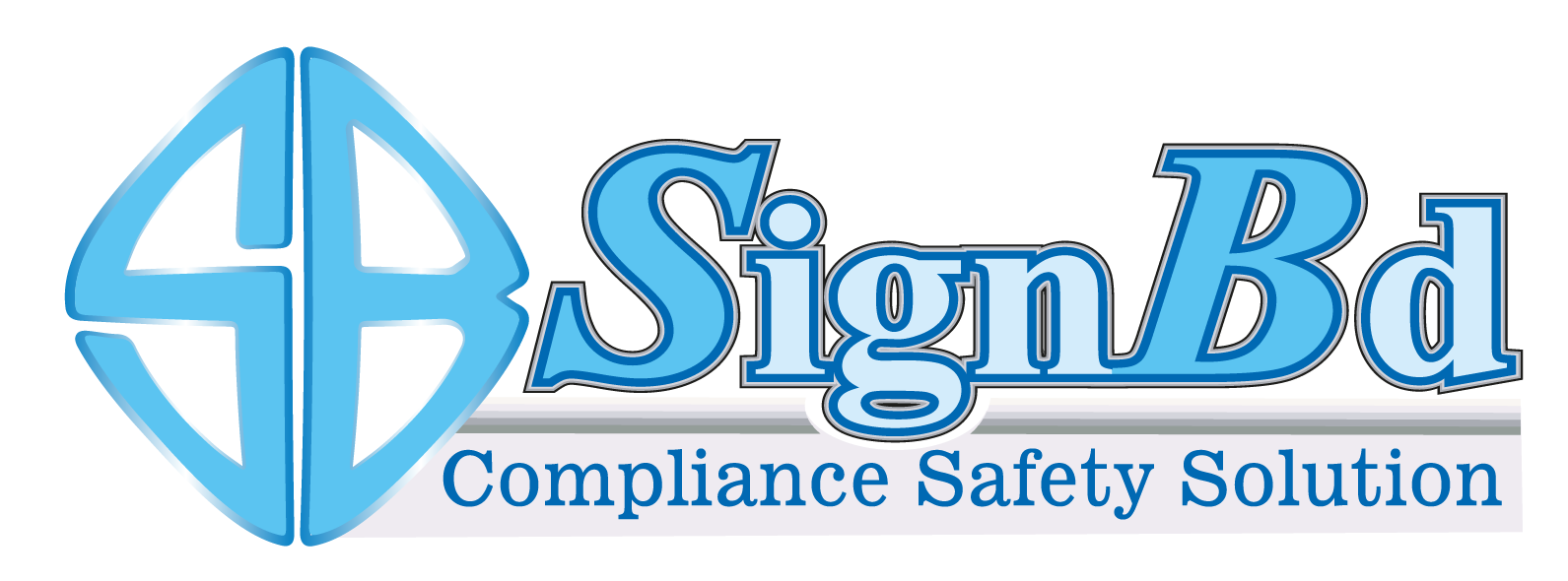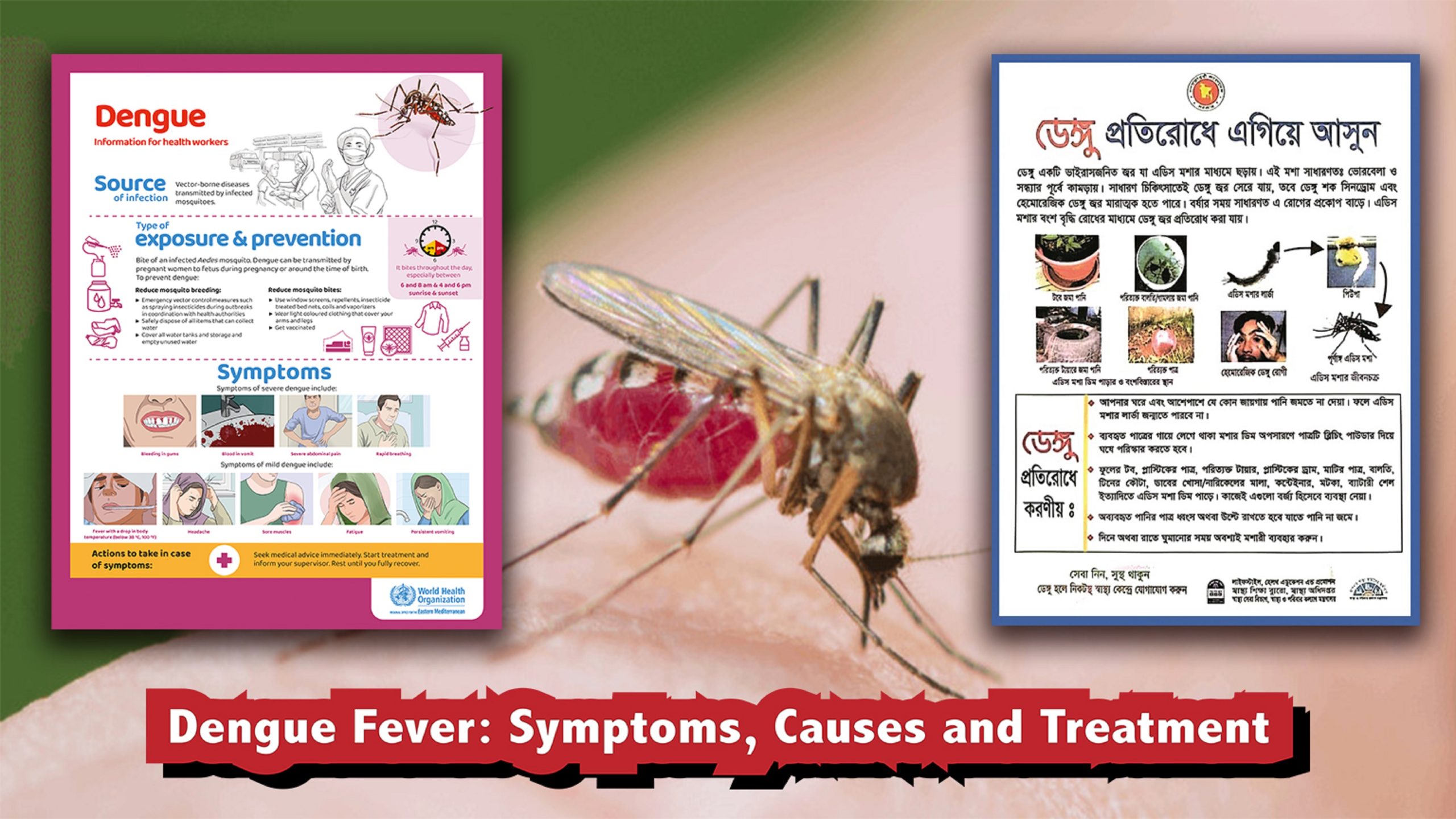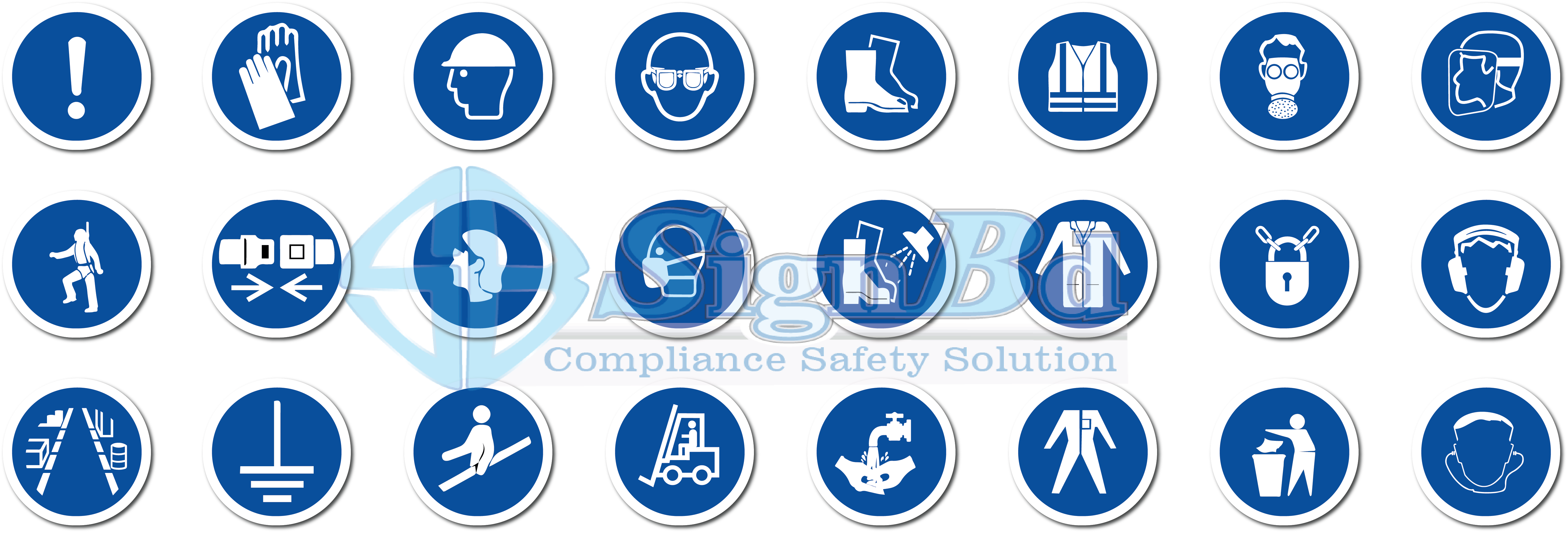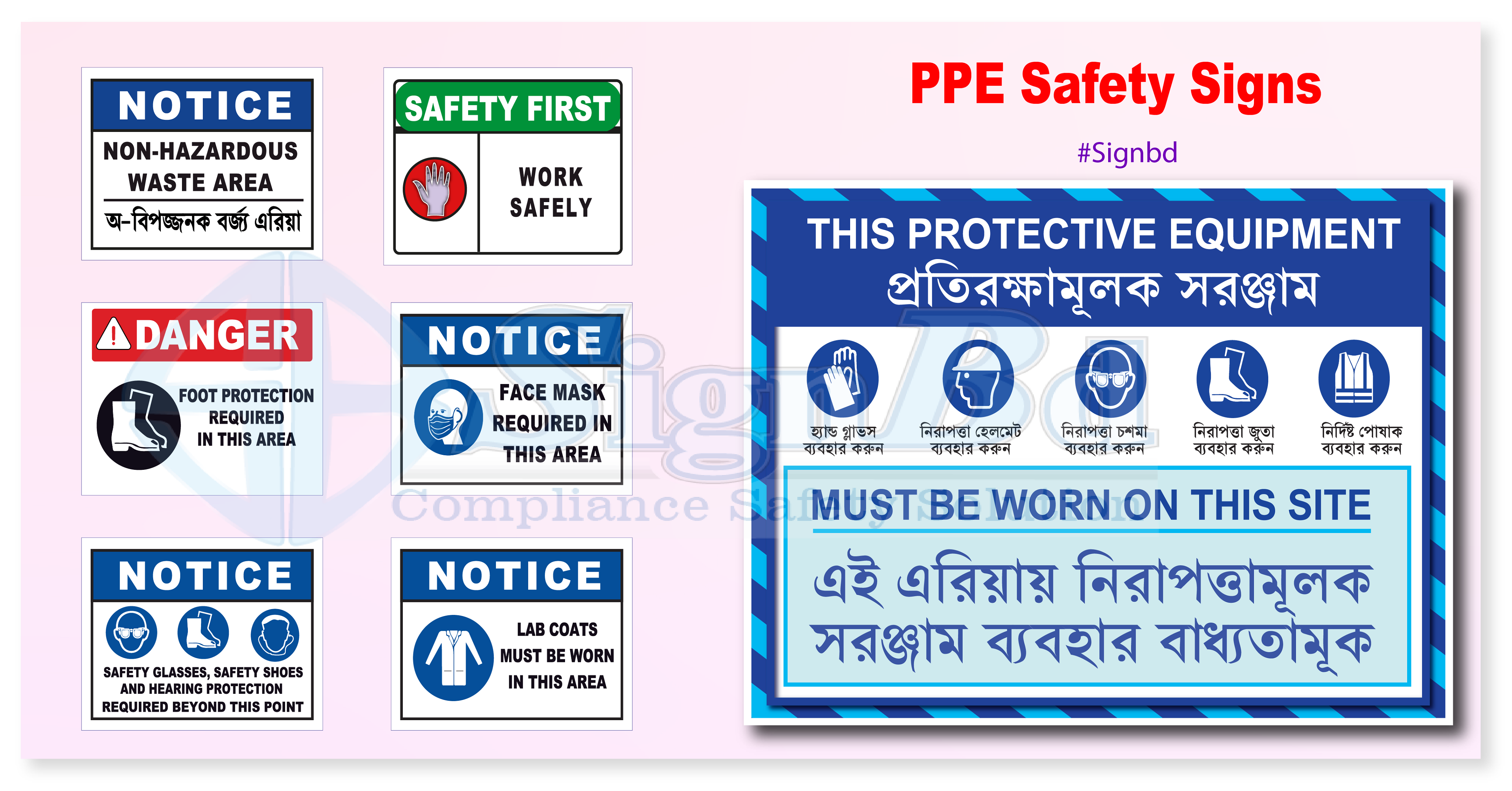+8801600371198
sign_bd@yahoo.com
Account Login
Blog
Home>>Dengue Fever: Symptoms, Causes and Treatment
Understanding Dengue Fever
Key of Outline Dengue Fever
- Introduction
- Brief overview of dengue fever
- Importance of awareness and prevention
- Understanding Dengue Fever
- Definition and background
- Global prevalence
- Primary Causes of Dengue Fever
- The role of Aedes mosquitoes
- Viral transmission process
- Different strains of dengue virus
- Symptoms of Dengue Fever
- Common signs and symptoms
- High fever
- Severe headache
- Joint and muscle pain
- Skin rash
- Bleeding tendencies
- Fatigue
- Nausea and vomiting
- Severe cases: DHF and DSS
- Common signs and symptoms
- Diagnosis of Dengue Fever
- Laboratory tests
- Clinical evaluation
- Dengue Fever Complications
- Hemorrhagic fever
- Shock syndrome
- Long-term effects
- Treatment of Dengue Fever
- Symptomatic treatment
- Pain and fever management
- Hospital care for severe cases
- Preventive Measures
- Mosquito control strategies
- Personal protection measures
- Community efforts
- Role of Public Health Organizations
- Awareness campaigns
- Vaccination programs
- Research and development
- Dengue Fever in Different Regions
- Tropical and subtropical areas
- Recent outbreaks
- Impact on Public Health
- Burden on healthcare systems
- Economic impact
- Travel Considerations
- Precautions for travelers
- High-risk destinations
- Future Directions in Dengue Fever Control
- Advances in vaccine development
- Innovative mosquito control methods
- Community Involvement
- Importance of community participation
- Success stories from different regions
- Conclusion
- Summary of key points
- Call to action for awareness and prevention
- FAQs
- What are the main symptoms of dengue fever?
- How is dengue fever transmitted?
- Can dengue fever be fatal?
- What preventive measures can individuals take?
- Is there a vaccine for dengue fever?
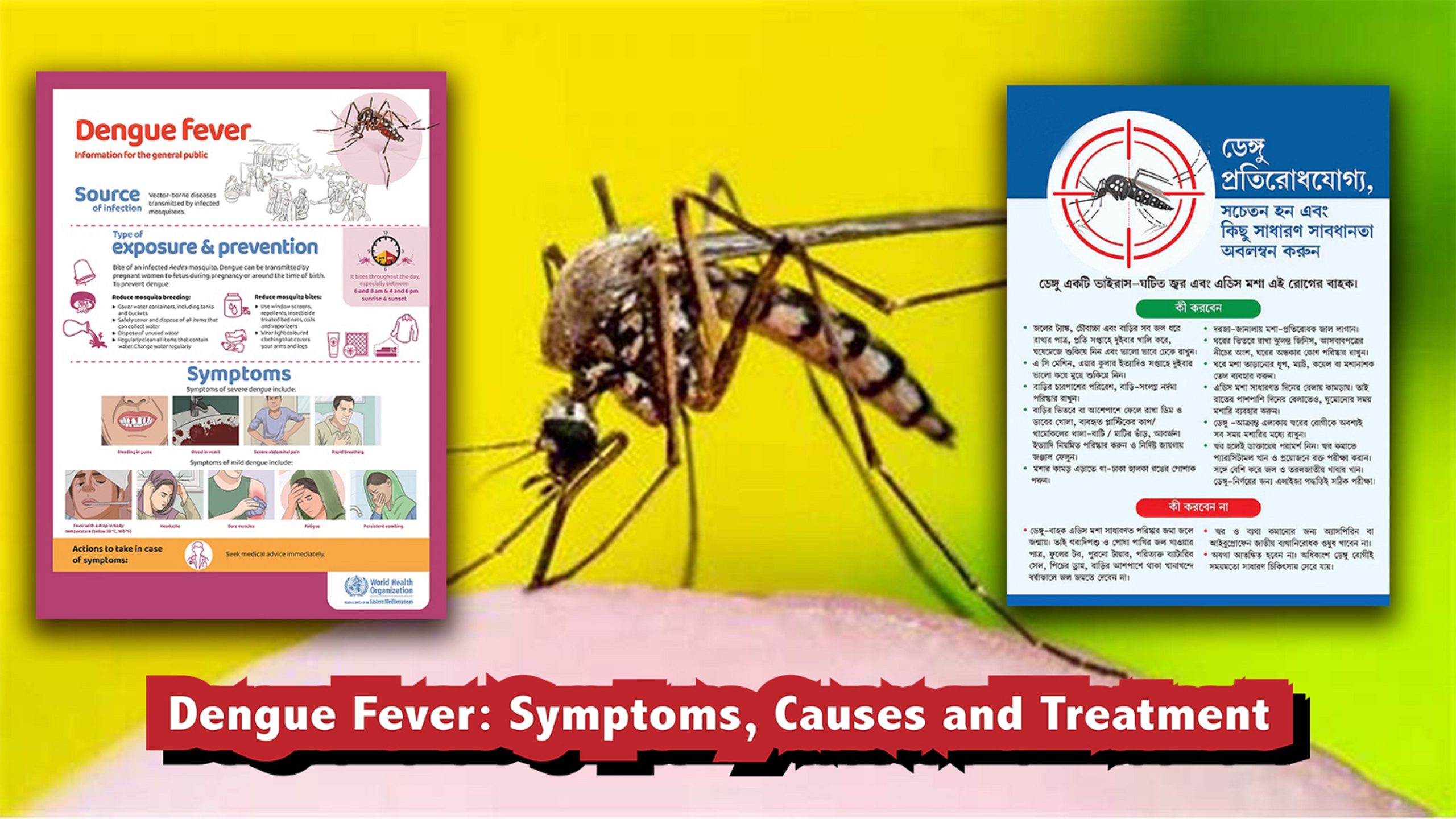
Dengue Fever
Dengue fever, also known as breakbone fever, is a viral disease primarily transmitted through the bite of the Aedes mosquito. This article delves into the critical aspects of dengue fever, its causes, symptoms, and treatment options.
Understanding Dengue Fever
Dengue fever, commonly referred to as “bone-breaking fever,” is a mosquito-borne viral infection caused by the dengue virus. Prevalent in many tropical and subtropical regions, dengue fever is spreading globally and can become life-threatening if not managed properly. Let’s explore the causes, symptoms, and treatments of this disease.
Primary Causes of Dengue Fever
The Role of Aedes Mosquitoes
The main culprit behind dengue fever is the Aedes mosquito, particularly the Aedes aegypti species. These mosquitoes become carriers of the dengue virus after feeding on an infected person’s blood. They then transmit the virus to other individuals through their bites.
Viral Transmission Process
The virus spreads to humans via mosquito bites. Once an infected mosquito bites a person, the virus enters the bloodstream and begins to replicate. This can lead to a range of symptoms that vary in severity.
Different Strains of Dengue Virus
There are four distinct dengue virus strains (DENV-1 to DENV-4), and infection with one strain does not provide immunity against the others. This means a person can be infected multiple times, each time by a different strain.
Symptoms of Dengue Fever
Dengue fever manifests with a variety of symptoms, which can range in severity. Common signs and symptoms include:
Common Signs and Symptoms
- High Fever: A sudden and high fever is the hallmark of dengue fever.
- Severe Headache: Often described as a frontal headache.
- Severe Joint and Muscle Pain: Known as the “breakbone” sensation.
- Skin Rash: A rash that appears a few days after the fever onset.
- Bleeding: Some individuals may experience nose or gum bleeding.
- Fatigue: Persistent tiredness and weakness.
- Nausea and Vomiting: Digestive symptoms that can accompany the illness.
Severe Cases: DHF and DSS
In severe cases, dengue fever can escalate to dengue hemorrhagic fever (DHF) or dengue shock syndrome (DSS), both of which are potentially fatal and require immediate medical intervention.
Diagnosis of Dengue Fever
Laboratory Tests
Diagnosis typically involves laboratory tests such as blood tests to detect the virus or antibodies produced in response to infection.
Clinical Evaluation
Healthcare providers also perform a clinical evaluation, considering the patient’s symptoms and potential exposure to mosquitoes in endemic areas.
Dengue Fever Complications
Hemorrhagic Fever
Dengue hemorrhagic fever is a severe form of dengue fever characterized by bleeding, blood plasma leakage, and low platelet count.
Shock Syndrome
Dengue shock syndrome is the most severe form and can lead to dangerously low blood pressure and organ failure.
Long-term Effects
Some patients may experience prolonged fatigue and other lingering symptoms even after the acute phase has resolved.
Treatment of Dengue Fever
Symptomatic Treatment
Currently, there is no specific antiviral treatment for dengue fever. The treatment focuses on alleviating symptoms and managing complications.
Pain and Fever Management
Acetaminophen can help control fever and pain. Avoid non-steroidal anti-inflammatory drugs (NSAIDs) like ibuprofen and aspirin, as they can worsen bleeding complications.
Hospital Care for Severe Cases
Severe cases may require hospitalization and intensive care, including intravenous fluid administration and monitoring for complications.
Preventive Measures
Mosquito Control Strategies
The most effective way to prevent dengue fever is by reducing mosquito exposure. This includes using insecticides, larvicides, and community-wide mosquito control programs.
Personal Protection Measures
Individuals can protect themselves by using mosquito repellent, wearing long-sleeved clothing, and using bed nets.
Community Efforts
Communities can help by eliminating standing water where mosquitoes breed, such as in flower pots, tires, and gutters.
Role of Public Health Organizations
Awareness Campaigns
Public health organizations play a crucial role in raising awareness about dengue fever and promoting preventive measures.
Vaccination Programs
Efforts are ongoing to develop and distribute effective dengue vaccines, with some vaccines already available in certain regions.
Research and Development
Continuous research is essential to understand the virus better and develop new strategies for prevention and treatment.
Dengue Fever in Different Regions
Tropical and Subtropical Areas
Dengue fever is most prevalent in tropical and subtropical regions, including Southeast Asia, the Pacific Islands, the Caribbean, and Latin America.
Recent Outbreaks
Recent outbreaks have highlighted the importance of preparedness and effective mosquito control measures.
Impact on Public Health
Burden on Healthcare Systems
Dengue fever poses a significant burden on healthcare systems, particularly in countries with limited resources.
Economic Impact
The economic impact includes direct medical costs and indirect costs such as lost productivity due to illness.
Travel Considerations
Precautions for Travelers
Travelers to endemic areas should take precautions to avoid mosquito bites, such as using insect repellent and staying in accommodations with screened windows and doors.
High-Risk Destinations
Certain destinations are at higher risk for dengue transmission, and travelers should be aware of these areas before planning their trips.
Future Directions in Dengue Fever Control
Advances in Vaccine Development
Research into new and improved vaccines continues, with the goal of providing broader and more effective protection against dengue.
Innovative Mosquito Control Methods
New methods, such as genetically modified mosquitoes and biological controls, are being explored to reduce mosquito populations.
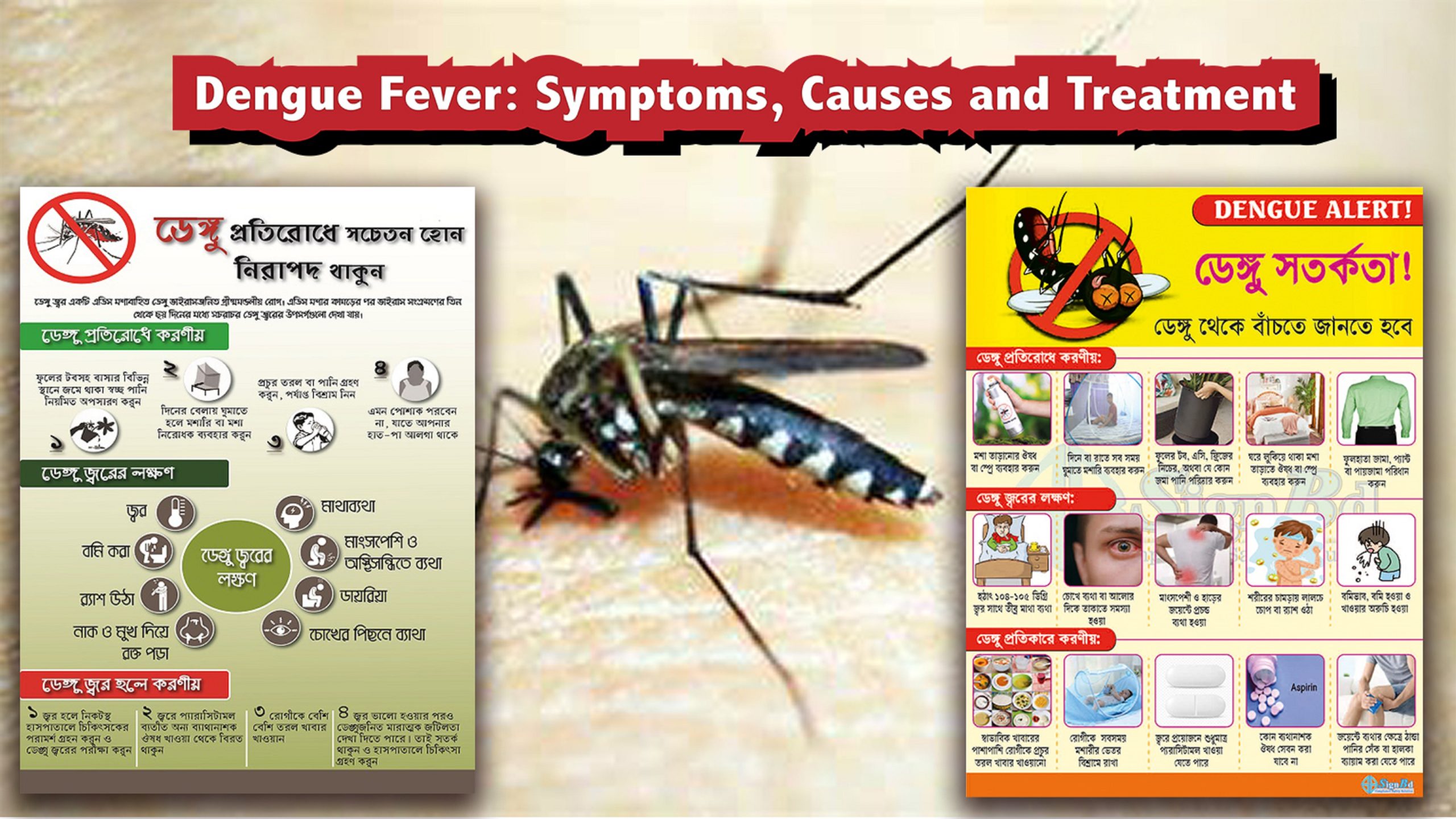
Community Involvement
Importance of Community Participation
Community involvement is crucial for effective dengue control, as local residents can help identify and eliminate mosquito breeding sites.
Success Stories from Different Regions
Success stories from various regions demonstrate the effectiveness of community-led initiatives in reducing dengue transmission.
Conclusion
Dengue fever, a viral disease spread by Aedes mosquitoes, poses significant health risks if not appropriately addressed. Understanding its causes, recognizing the symptoms, and seeking proper medical care are essential steps in managing and preventing this potentially dangerous disease. By adopting preventive measures and staying informed, we can combat the spread of dengue fever and protect public health.
FAQs
What are the main symptoms of dengue fever?
The main symptoms include high fever, severe headache, joint and muscle pain, skin rash, bleeding tendencies, fatigue, and nausea.
How is dengue fever transmitted?
Dengue fever is transmitted through the bites of infected Aedes mosquitoes, particularly Aedes aegypti.
Can dengue fever be fatal?
Yes, severe forms of dengue fever, such as dengue hemorrhagic fever and dengue shock syndrome, can be fatal without prompt medical treatment.
What preventive measures can individuals take?
Individuals can use mosquito repellent, wear long-sleeved clothing, use bed nets, and eliminate standing water around their homes to prevent mosquito breeding.
Is there a vaccine for dengue fever?
There are vaccines available in certain regions, and ongoing research aims to develop more effective and widely accessible vaccines.
Dengue Sign
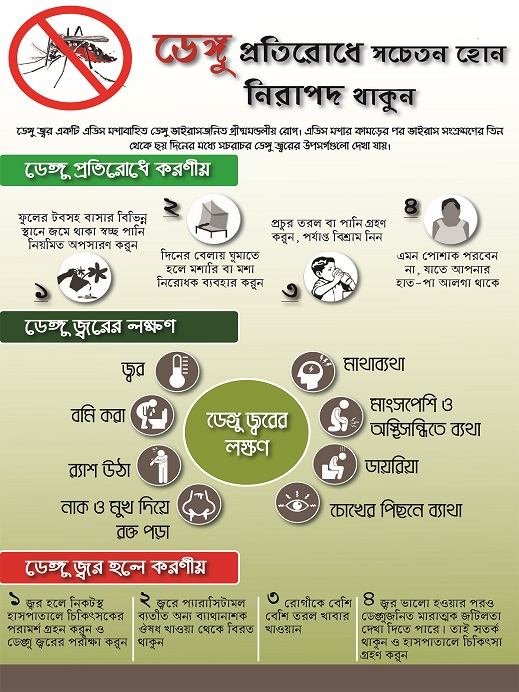
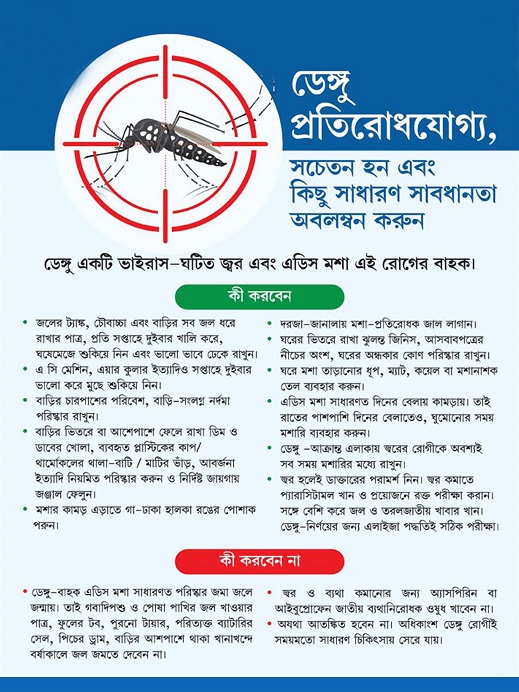
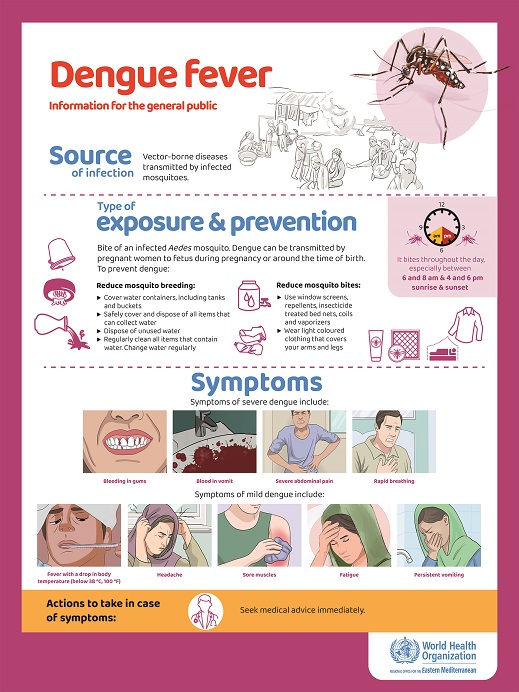
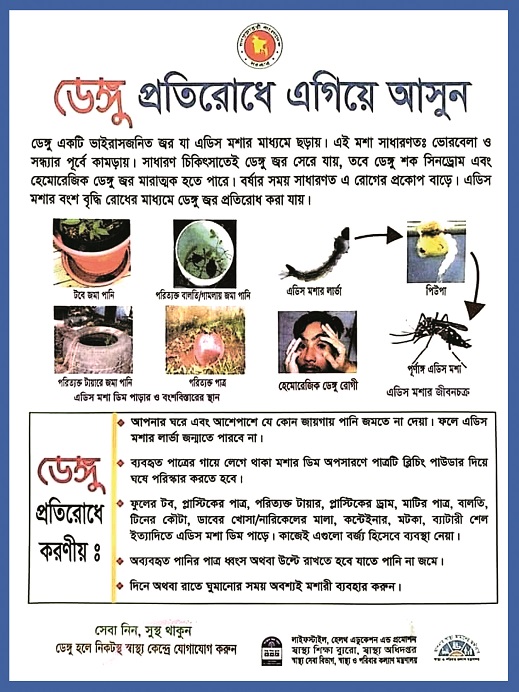
#MosquitoBorne #HealthAwareness #FightDengue #PreventDengue #StaySafe #HealthTips #ViralInfection #MosquitoControl #PublicHealth #Symptoms #Treatment #AedesMosquito #VectorControl #DenguePrevention #InfectiousDisease #Healthcare #Outbreak #CommunityHealth #GlobalHealth

OSHA Safety Signs
OSHA Safety Signs: A Comprehensive Guide to Ensuring Workplace Safety
Understanding the critical role of OSHA safety signs in the workplace is essential. These signs fall into four main categories: Danger, Warning, Caution, and Notification. Each serves a unique purpose in addressing varying levels of risk. Why are OSHA standards vital for safeguarding employees and workers?
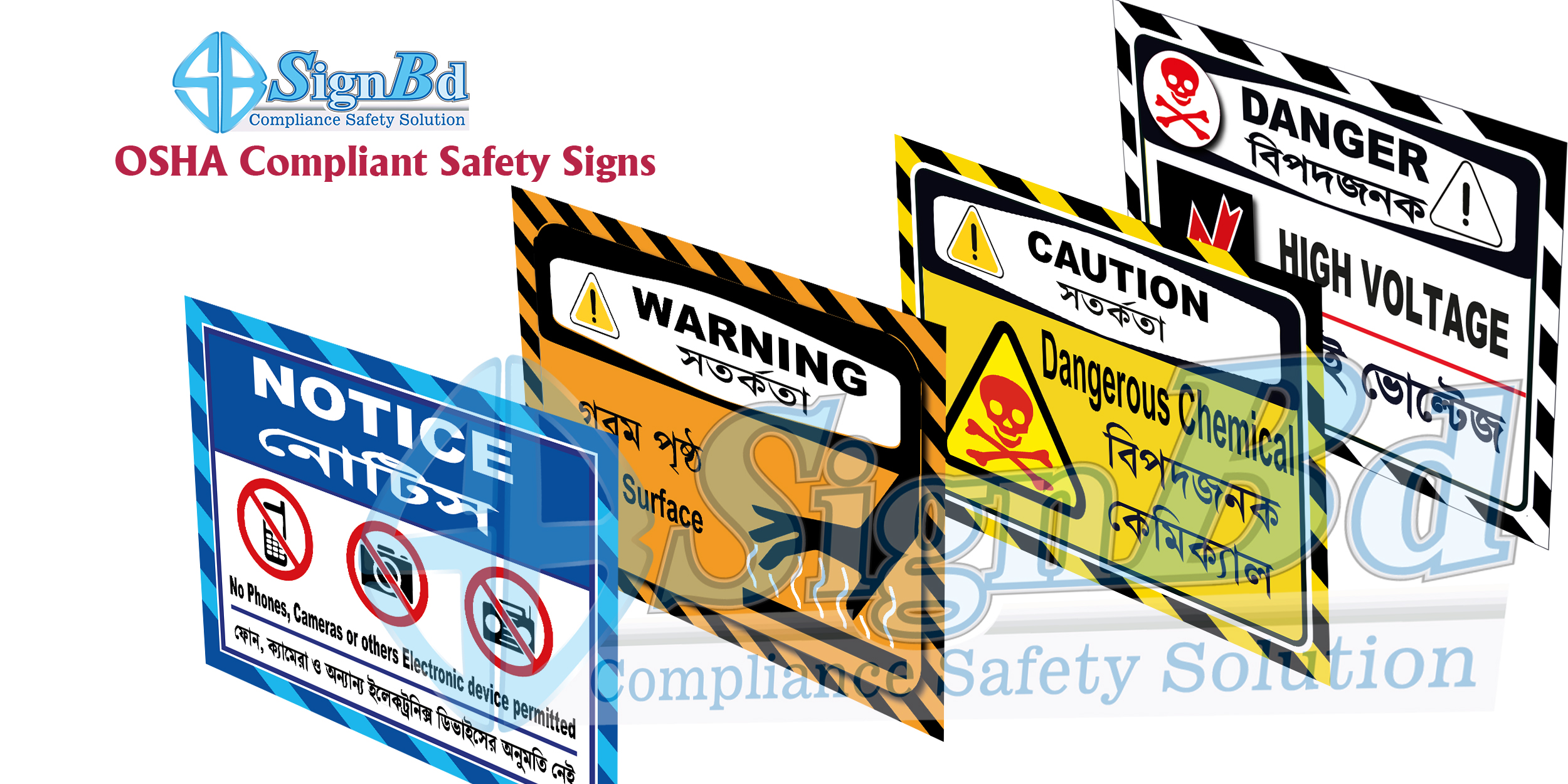

ANSI Safety Sign
Understanding and Implementing ANSI Safety Sign Standards
The American National Standards Institute (ANSI) sets the benchmark for safety and accident prevention through comprehensive guidelines, particularly ANSI Z535.4-2011 (R2017). These guidelines are crucial for creating effective safety signs and labels across various industries. Whether it’s a label or a sign, the primary goal is to convey critical safety information to comply with ANSI standards. Let’s delve into the importance of adhering to ANSI safety sign standards.
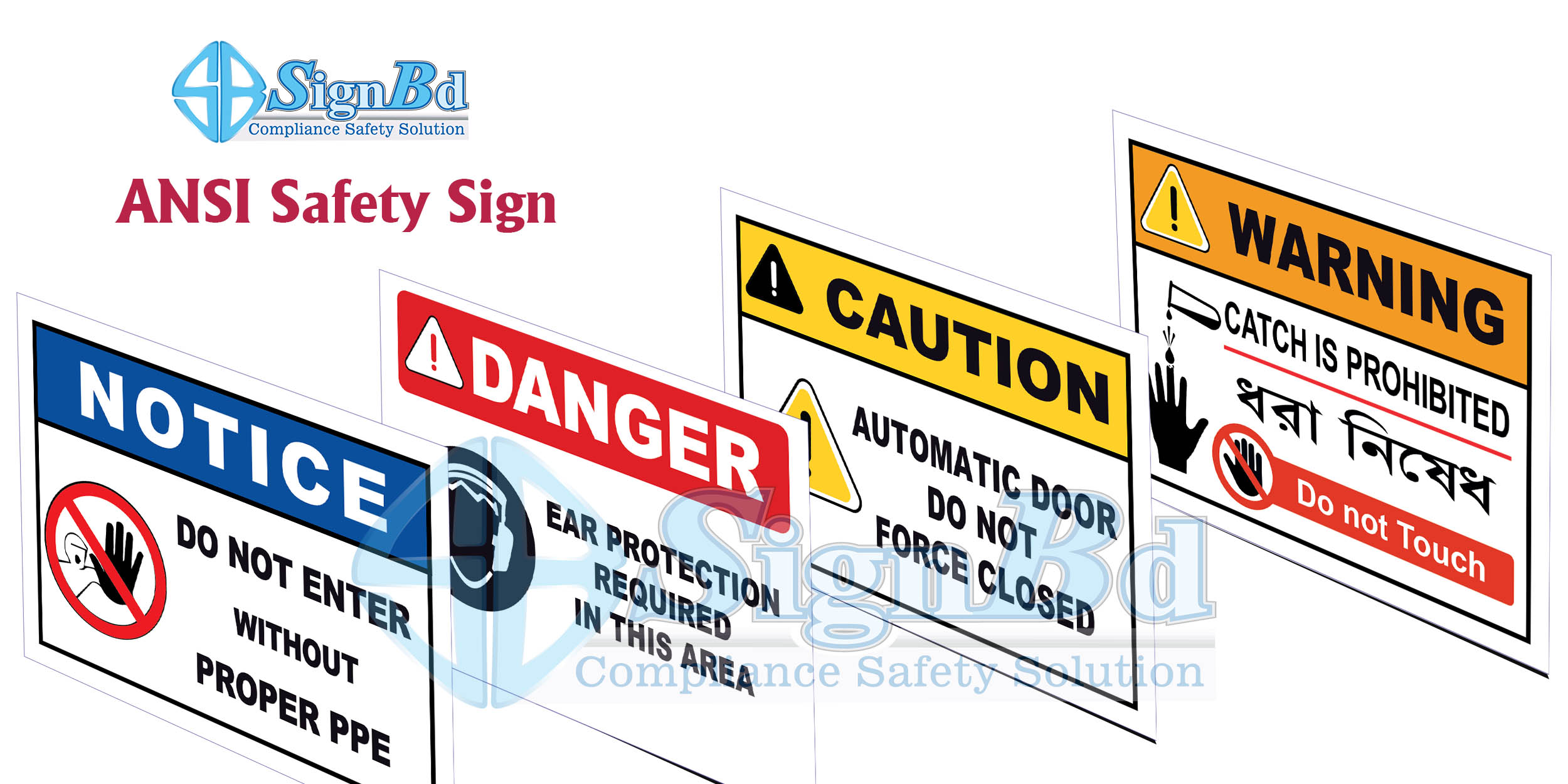

ISO Safety Signs
Enhancing Workplace Safety with ISO Safety Signs
In the modern workplace, safety is of utmost importance. One of the key elements in maintaining a safe environment is the use of ISO safety signs. These signs, governed by the ISO 7010 standard, are crucial for effective safety communication. They play a significant role in preventing accidents, ensuring fire safety, communicating health hazards, and facilitating emergency evacuations.

PPE Safety Sign
The Importance of PPE Safety Signs in the Workplace
What is PPE?
Personal Protective Equipment (PPE) refers to specialized clothing and equipment designed to shield the wearer from injury or infection. This includes items like protective clothing, helmets, gloves, goggles, and boots. PPE is crucial in various workplaces to protect workers from potential hazards such as chemical, radiological, physical, electrical, and mechanical dangers. Ensuring the use of PPE significantly reduces the risk of serious injuries and illnesses in the workplace.

The Essential Role of Caution Signs in Workplace Safety
Ensuring Safety Across Various Industries
In the world of industrial and manufacturing organizations, safety is paramount. Caution signs play an essential role in ensuring the well-being of employees and workers. This article delves into the significance of warning signs across various industries and how they contribute to workplace safety.
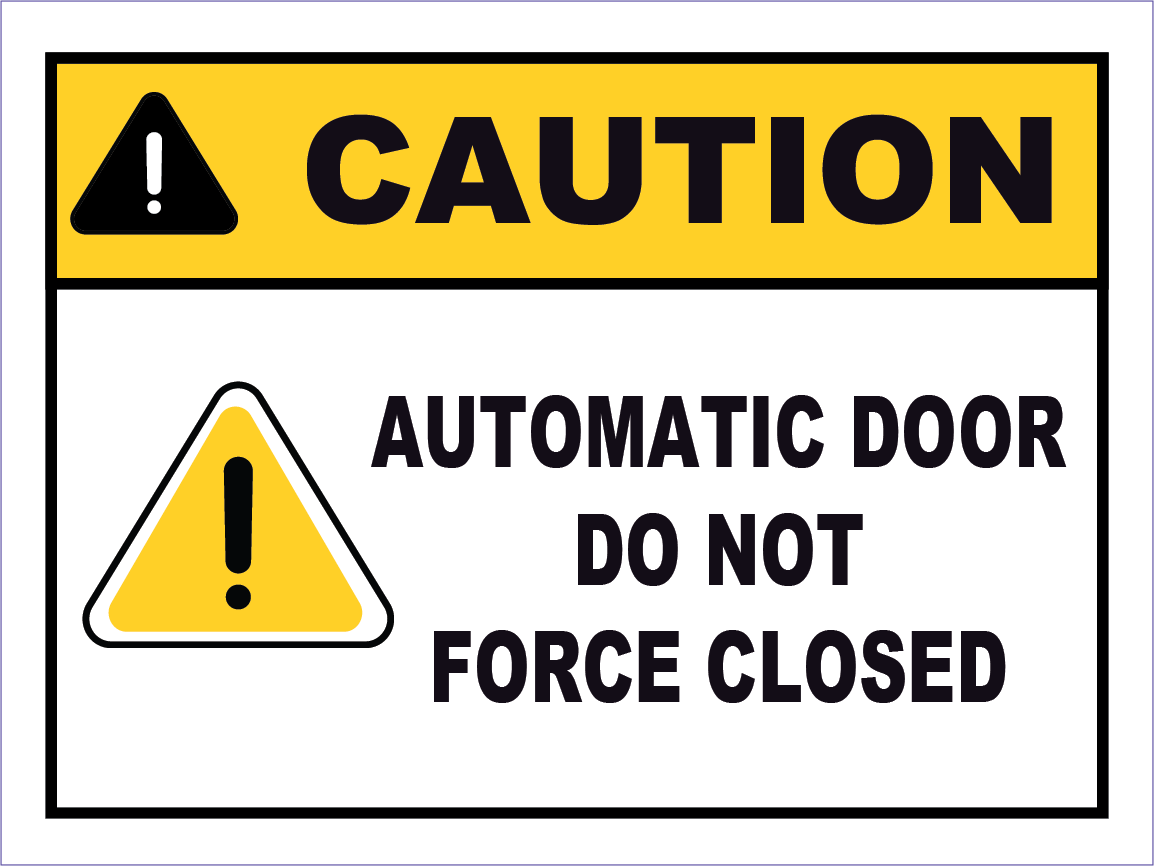
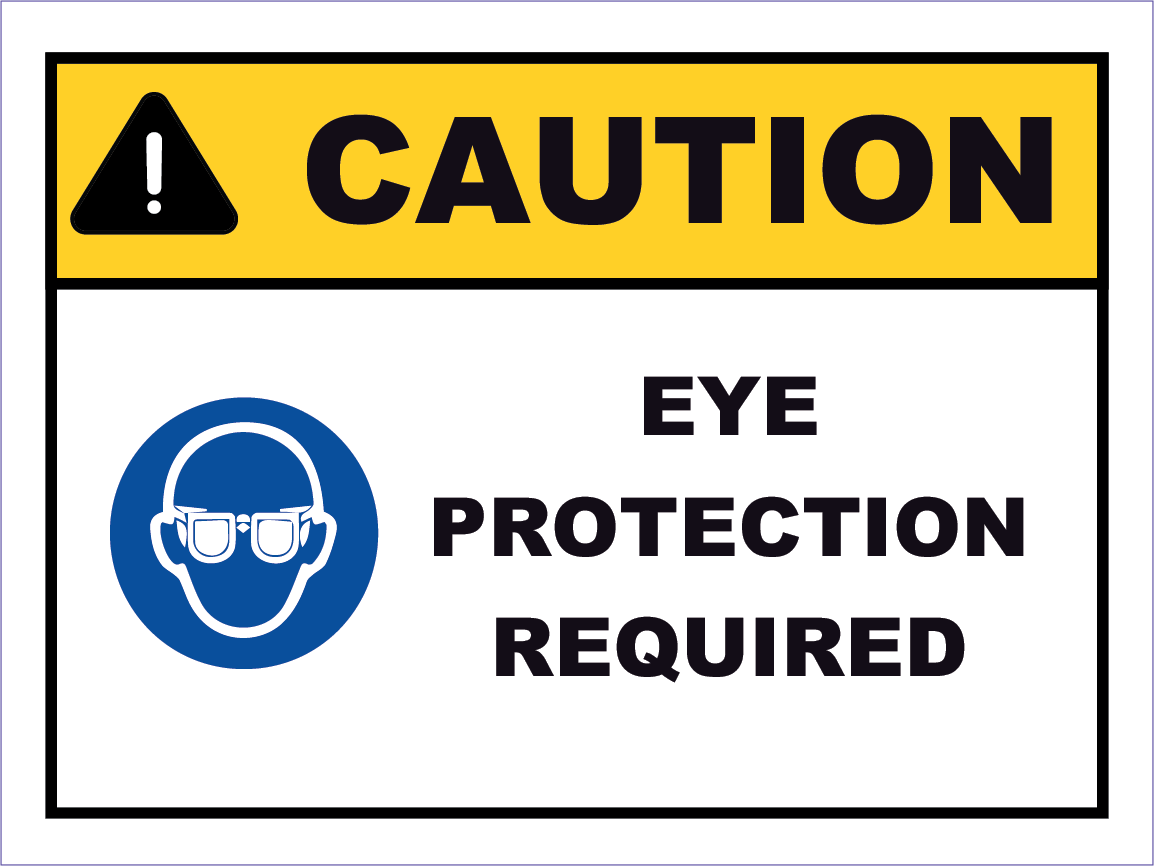
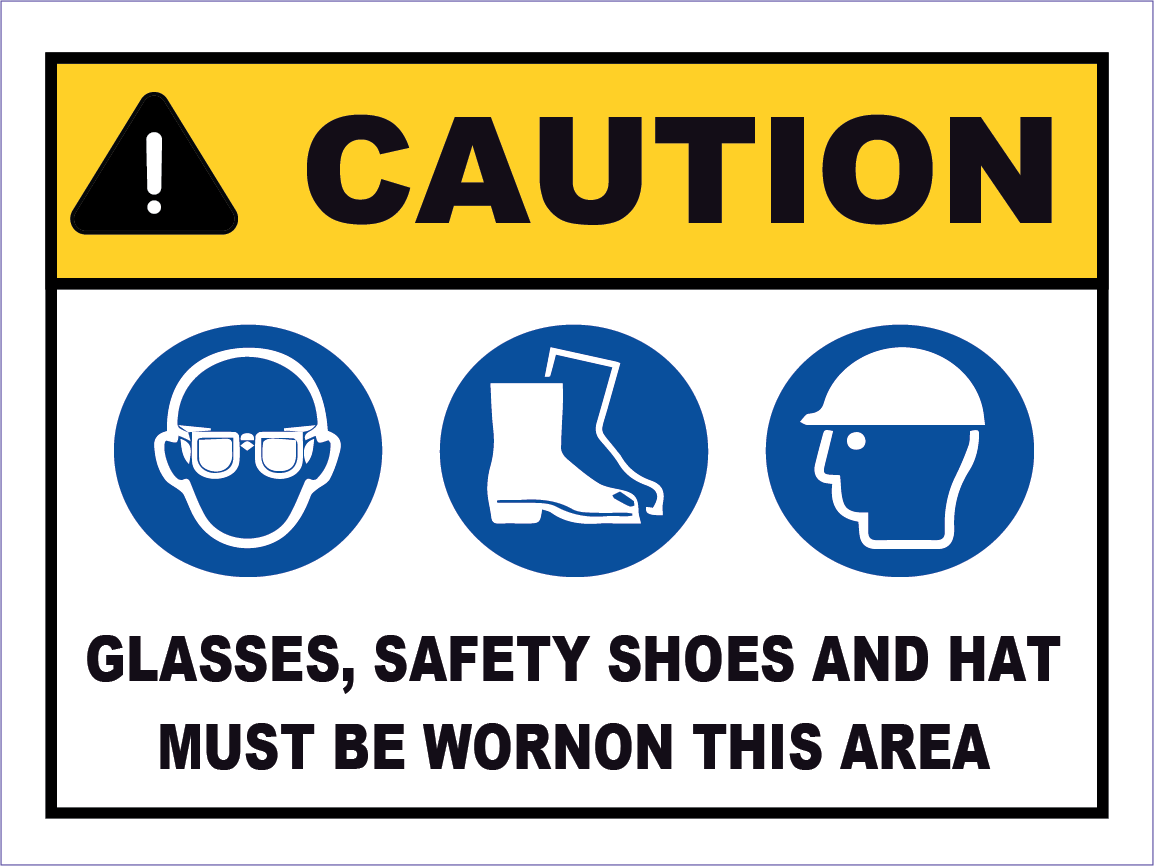
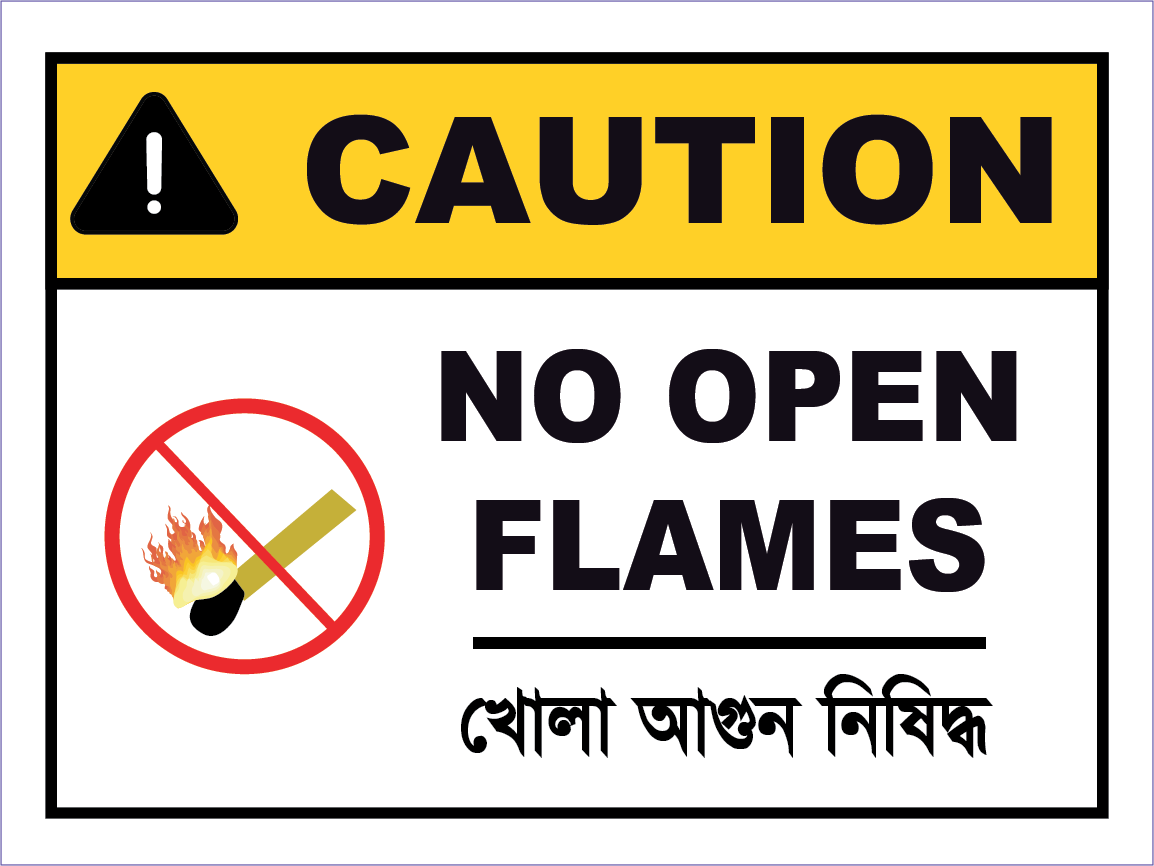
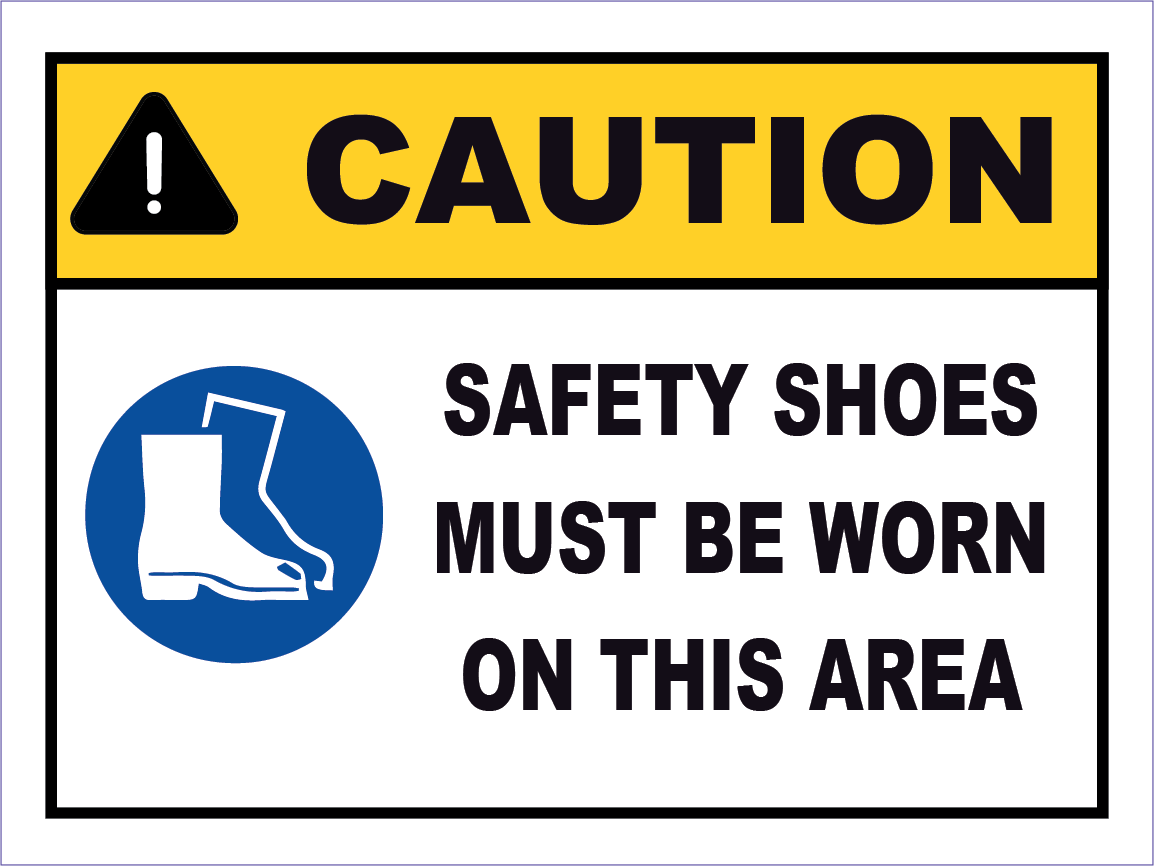

Bilingual Safety Signs
Danger Signs, Warning Signs, Mandatory Signs, Caution Signs, Prohibition Signs
Enhancing Workplace Safety with Bilingual Safety Signs
Introduction: The Importance of Bilingual Safety Signs
Effective communication in the workplace is crucial for ensuring safety, especially in multilingual environments. Bilingual safety signs are essential tools that help convey important safety information to all employees, regardless of their native language. This article delves into the significance of bilingual safety signs, including danger signs, warning signs, mandatory signs, and caution signs, across various industries.
Why Bilingual Safety Signs Matter
Bilingual safety signs act as universal communicators, ensuring that crucial safety information is accessible to everyone. Industries such as garment factories, dyeing and washing facilities, pharmaceutical companies, and tanneries rely heavily on these signs to maintain a safe working environment. These signs are not just visual aids; they are integral components of workplace safety.


Your Custom Evacuation Floor Plan Design
The Essential Guide to Fire Safety Evacuation Floor Plans
Ensuring the safety of employees in factories, industries, and companies worldwide hinges on having a meticulously designed fire safety evacuation floor plan. This article delves into the critical nature of these plans, particularly in compliance with US and European standards, and emphasizes their role in safeguarding worker and personnel safety.
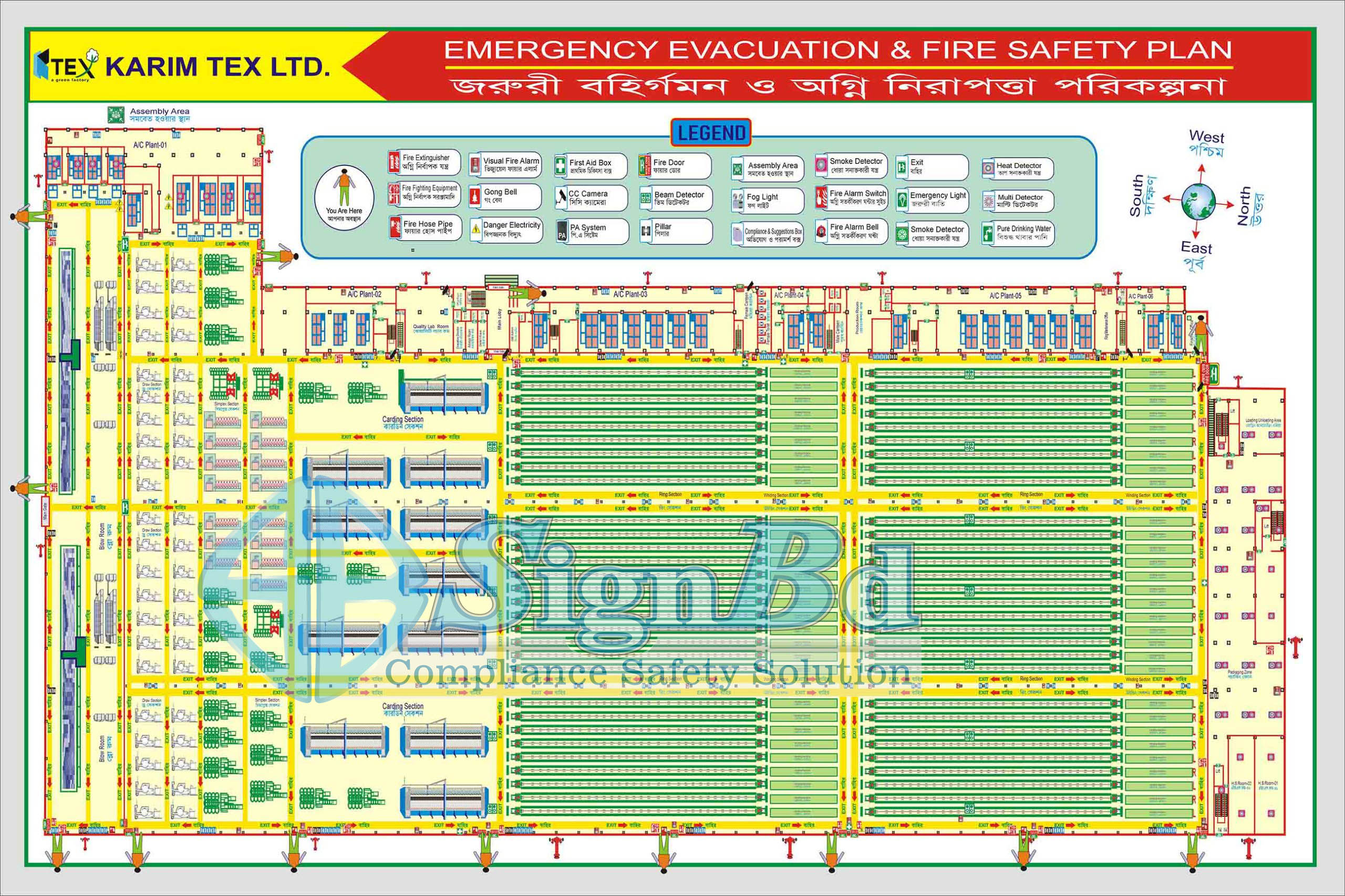
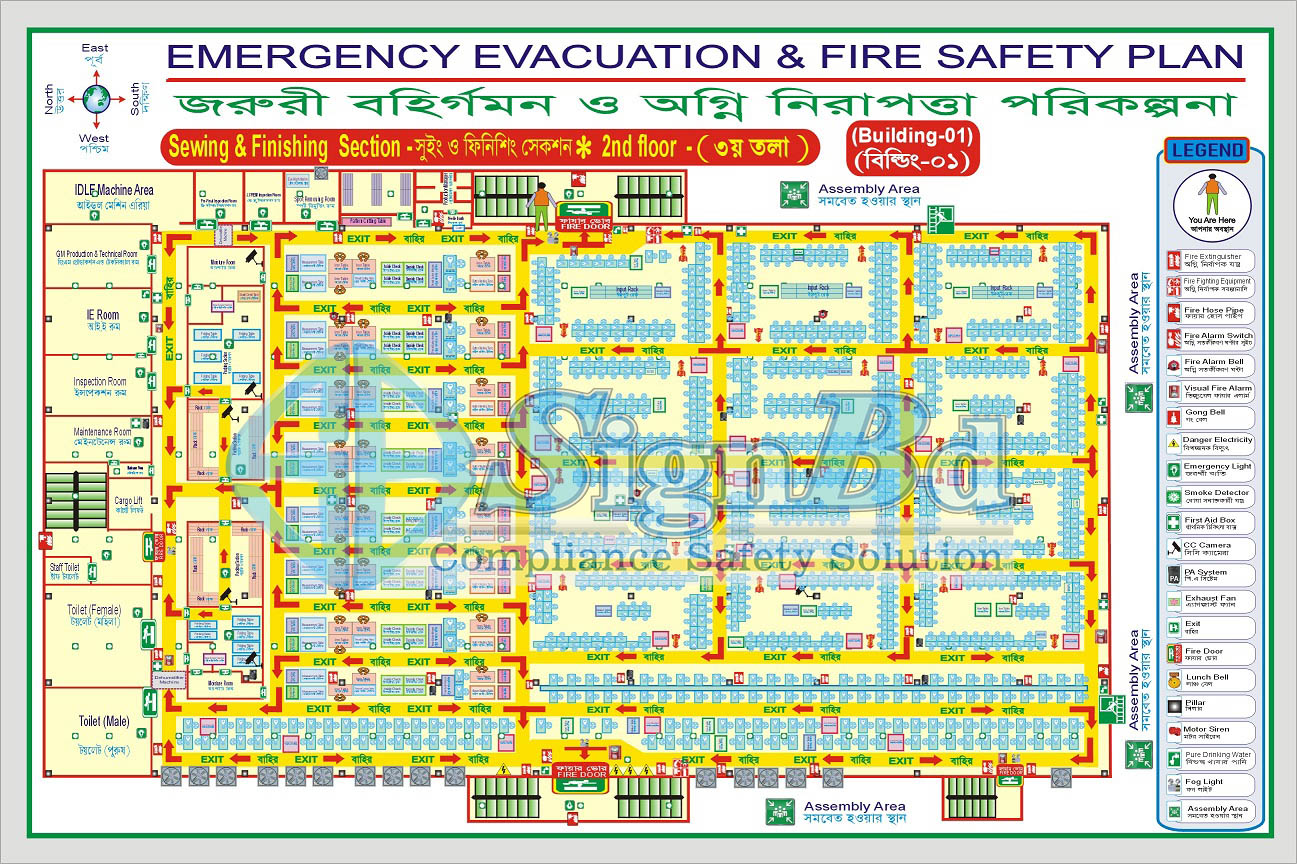
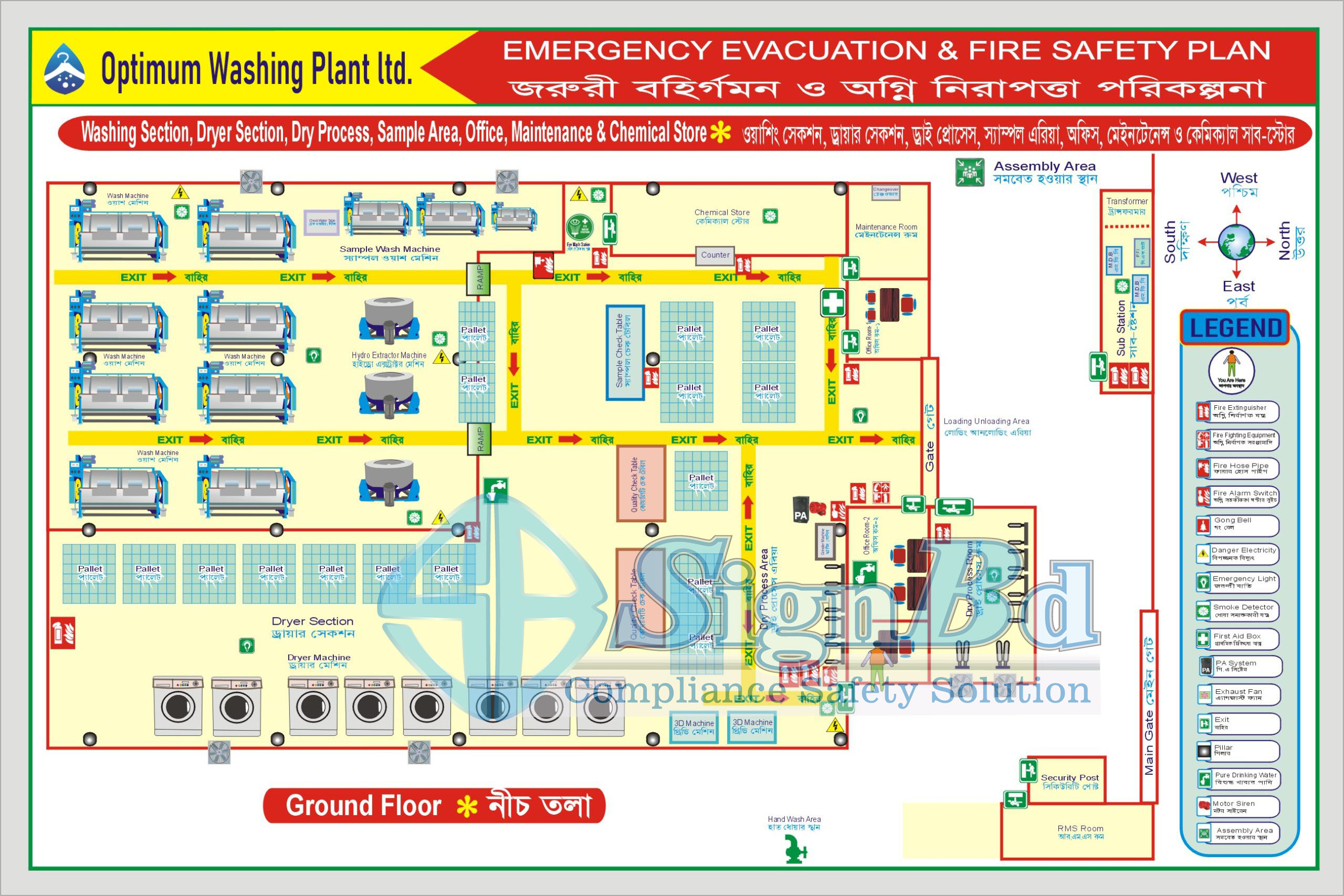
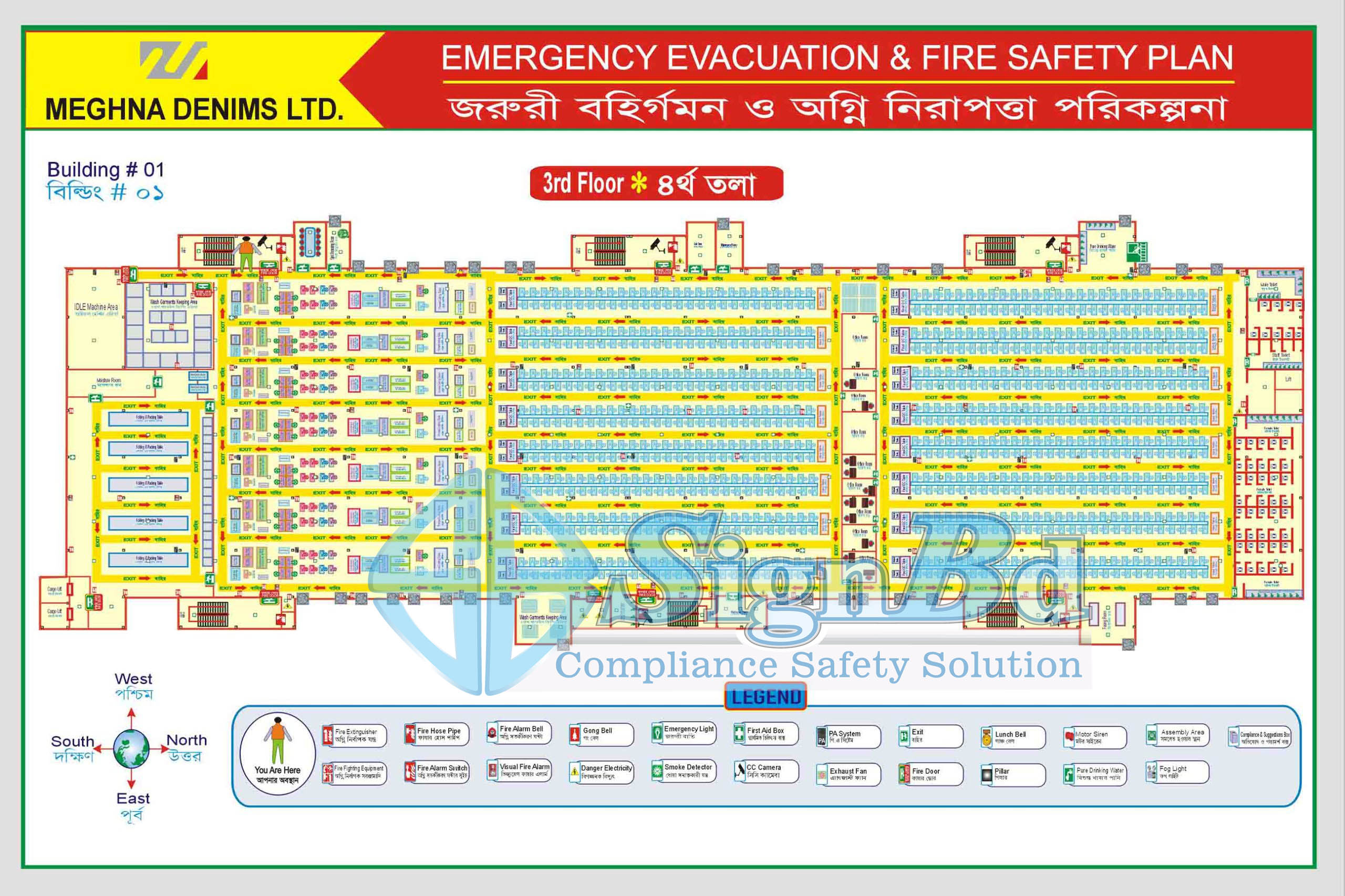
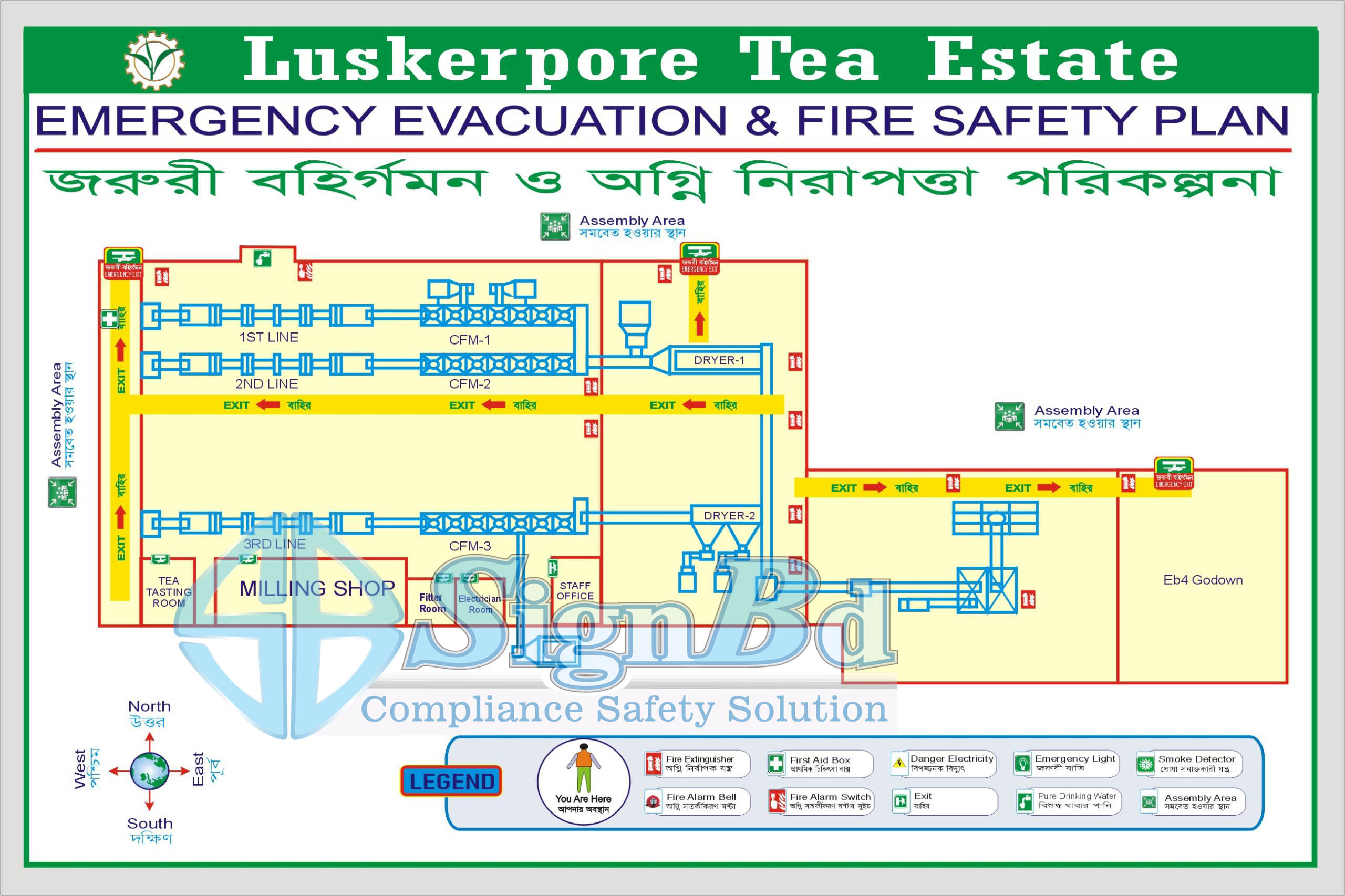
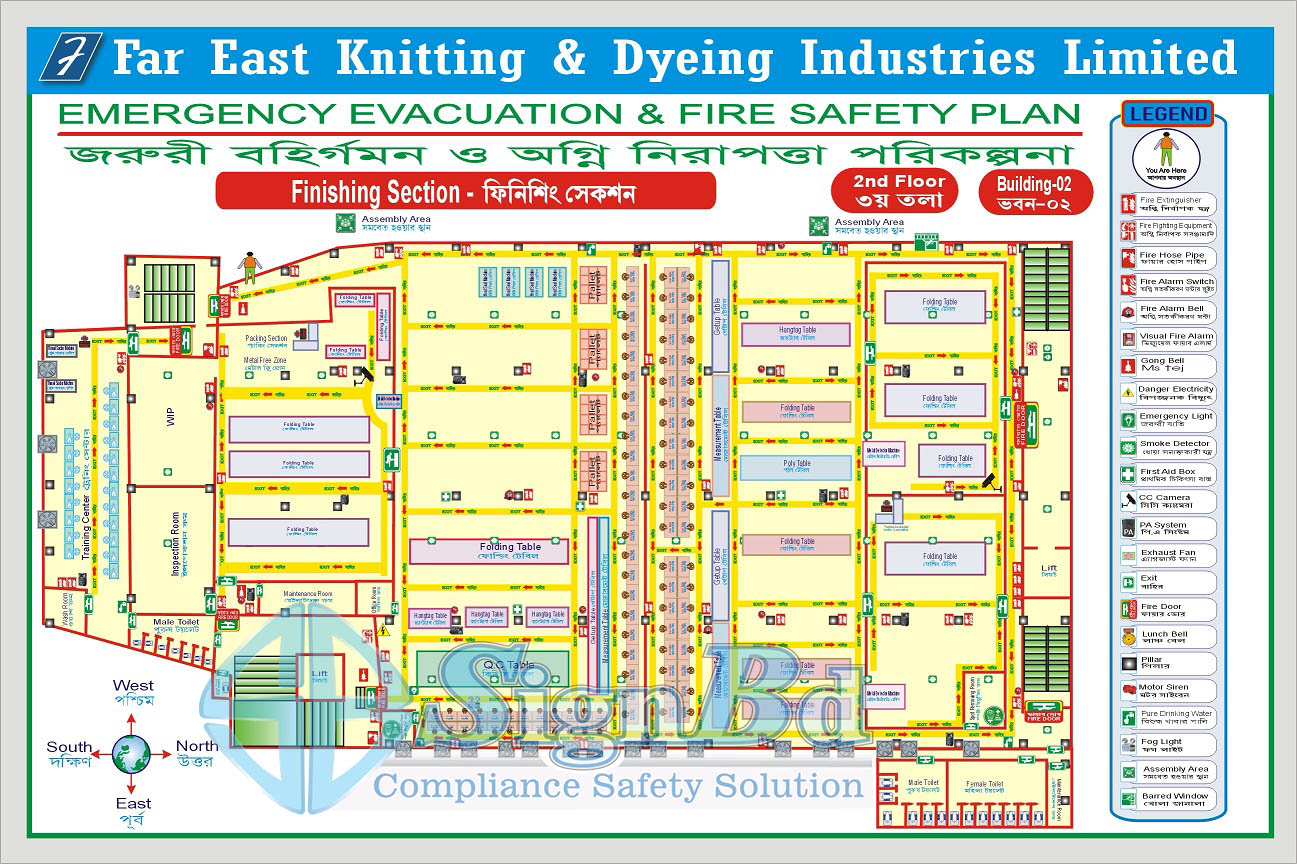
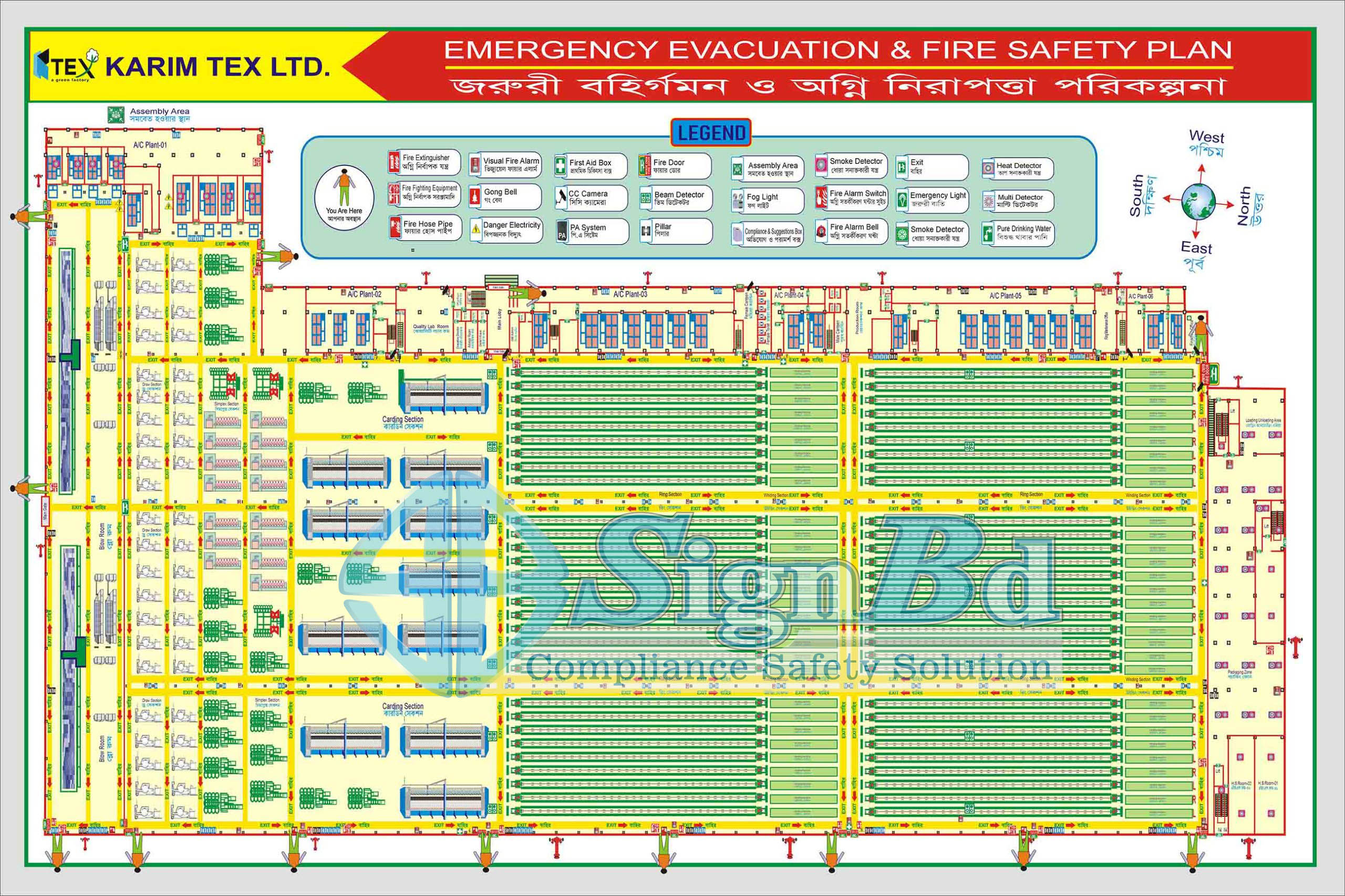
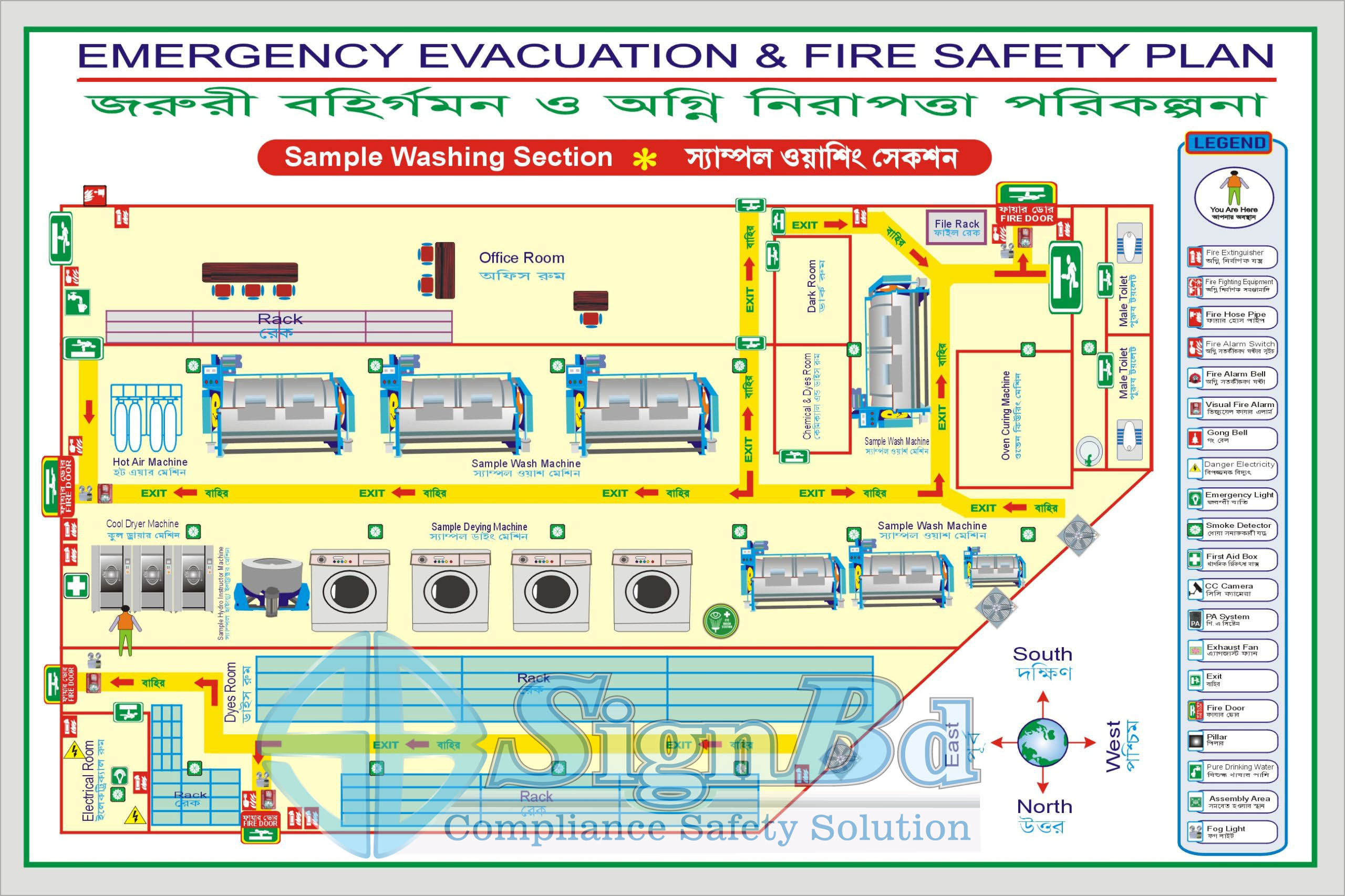
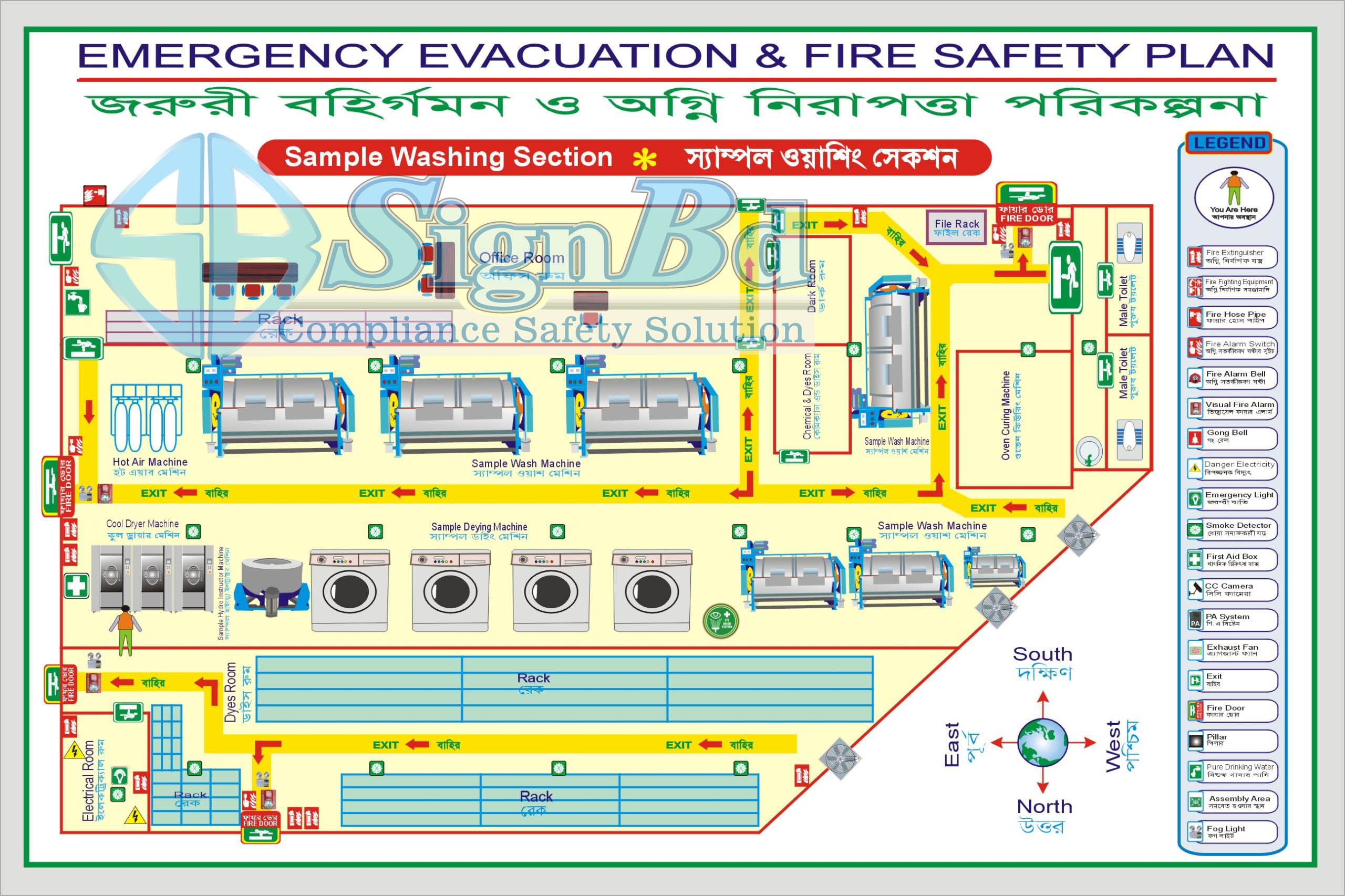

Compliance-Related Custom Sign Design
In ensuring safety and compliance in various industries, having the right signage is crucial.
SignBd specializes in compliance-related safety signs, risk assessments, flow charts, operating procedures, policies, MSDS, fire safety evacuation floor plans (drawing designs), fire safety signs.
Compliance-related safety signs, and chemical safety signs are custom designed.
We have completed expertise in Garment Factories, Green Factories, Textile and Shoe Factories, Pharmaceutical Companies, Washing Factories, Foods, Dyeing Factories, Dyeing Finishing, Tannery and ETP industries.
US and European buyers are active in these industries.
SignBd is experienced in custom sign design according to Fire Safety Evacuation Floor Plan category.
Our expertise spans since 2006.
Wherever you are? Share your plan with us. Our team is always ready to serve you.
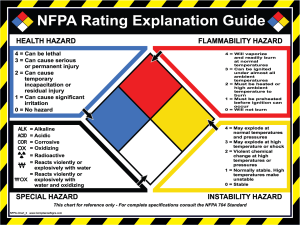
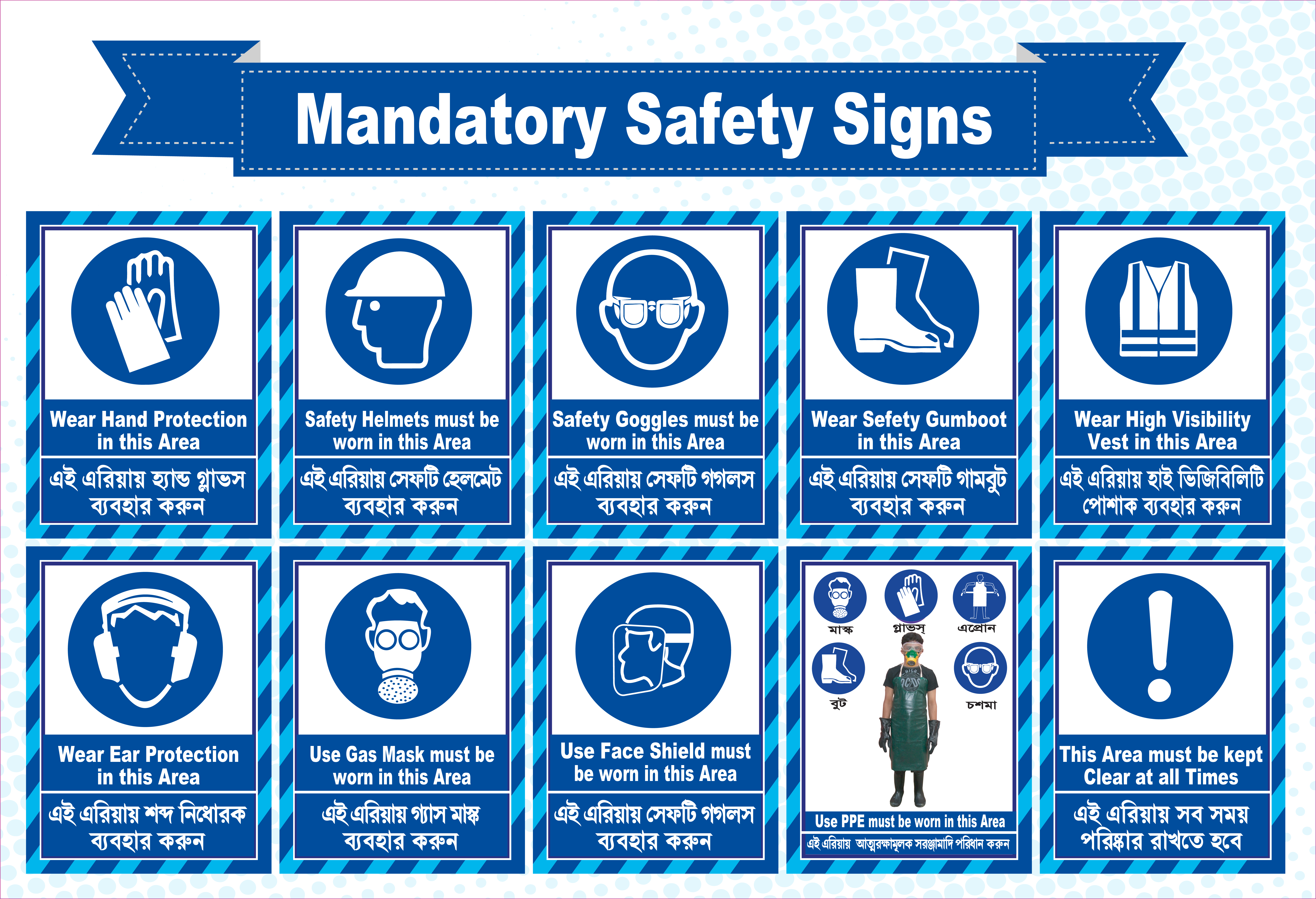

Gate in Touch:
Copyright © 2006 | Powered by signbd
